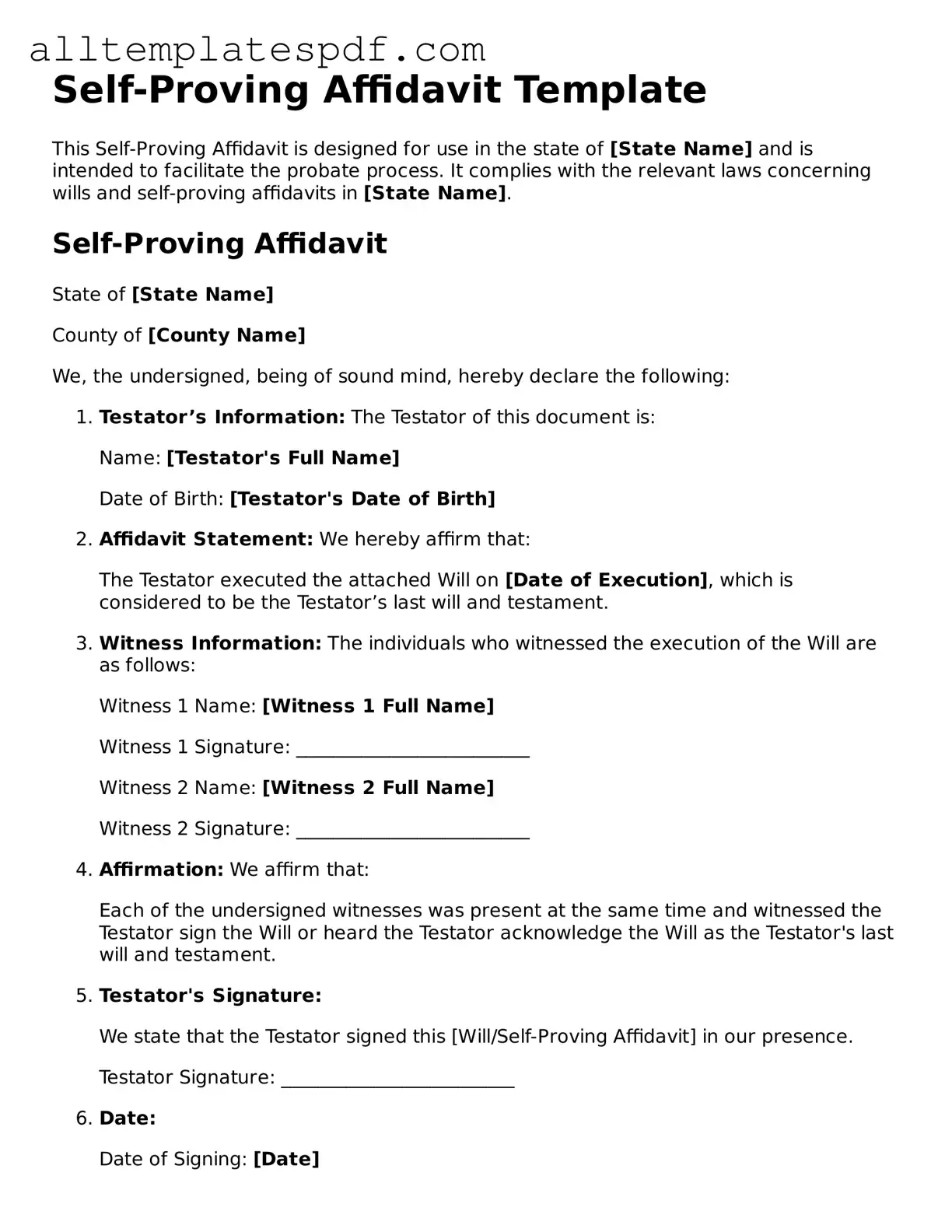Filling out a Self-Proving Affidavit can be a straightforward process, but many people make common mistakes that can complicate matters later on. One frequent error is failing to sign the document in front of a notary public. This step is crucial because the notary's role is to verify the identities of the signers and ensure that the document is executed properly. Without this signature, the affidavit may not hold up in court.
Another mistake involves incorrect or incomplete information. It’s essential to provide accurate details about the testator and the witnesses. Omitting names, addresses, or dates can lead to confusion and potential legal challenges. Double-checking this information before submission can save a lot of headaches down the line.
Some individuals neglect to include the required number of witnesses. Most states require at least two witnesses to sign the affidavit. If this requirement is not met, the affidavit may be deemed invalid. It's important to know your state’s specific laws regarding witness requirements to avoid this pitfall.
Additionally, people often forget to date the affidavit. A missing date can raise questions about when the document was executed, which can be critical in legal situations. Always ensure that the date is clearly indicated to provide a complete and accurate record.
Another common oversight is using outdated forms. Laws and requirements can change, and using an old version of the Self-Proving Affidavit may lead to complications. Always obtain the most current form from a reliable source to ensure compliance with current laws.
Some individuals also misinterpret the purpose of the Self-Proving Affidavit. It is meant to simplify the probate process by providing evidence that the will was executed properly. Failing to understand this can lead to unnecessary complications or disputes during probate.
Lastly, many people underestimate the importance of reviewing the completed affidavit. Rushing through the process can lead to mistakes that might have been easily caught with a careful review. Take the time to go over the document thoroughly before finalizing it. This simple step can help avoid future legal challenges.
